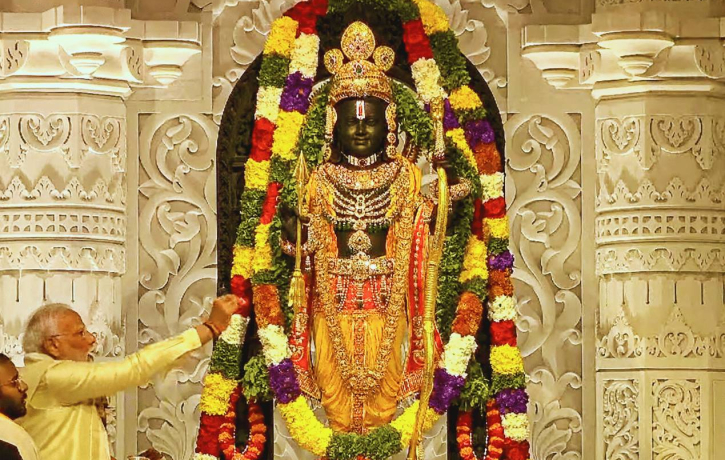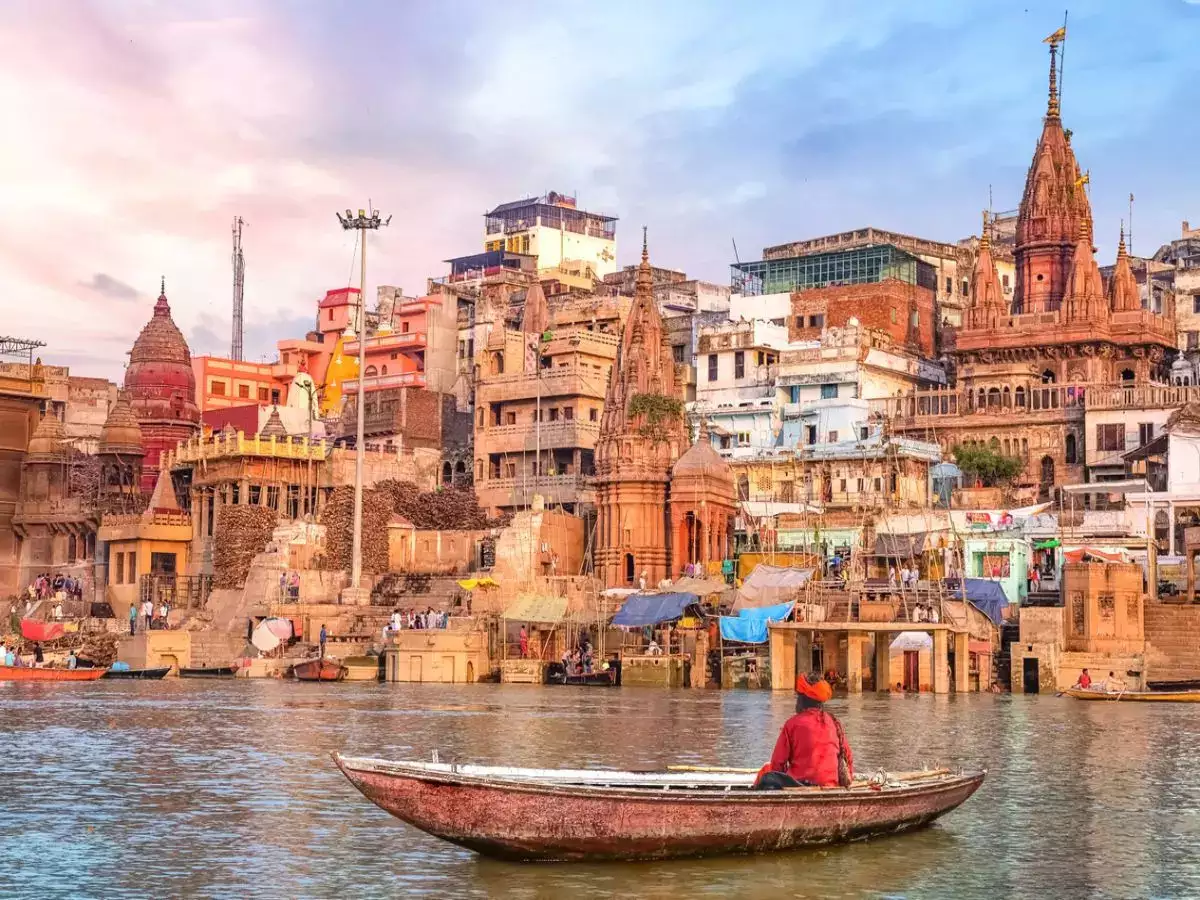Ayodhya, India, witnessed a historic moment on January 22, 2024, as the much-anticipated inauguration of the grand Ram Mandir unfolded. Centuries of anticipation and a complex legal and emotional struggle converged into a wave of joyous celebration. The holy town, believed to be the birthplace of Lord Rama, resonated with the chants of “Jai Shri Ram” as devotees thronged the streets, their faces aglow with relief and jubilation.
A Grand Inauguration: Meticulous Tradition and Breathtaking Grandeur
The inauguration ceremony, precisely three years after the foundation stone laying ceremony, was a tapestry of tradition and breathtaking grandeur. Prime Minister Narendra Modi, the chief guest, presided over the sacred “Pran Pratishtha” ceremony, symbolizing the ritualistic installation of the idol of Ram Lalla within the sanctum sanctorum. Dignitaries, religious leaders, and millions of devotees witnessed the historic event, creating an electrifying fervor in the air.
Symbol of National Unity: Prime Minister Modi’s Vision
In his address, Prime Minister Modi hailed the occasion as a symbol of national unity and cultural revival. He emphasized the unifying power of Lord Rama and expressed hope that the temple would foster peace, harmony, and spiritual solace for all. The Ram Mandir, beyond its religious significance, was portrayed as a cornerstone of India’s rich cultural heritage.
Decades-long Struggle: A Journey Fraught with Emotion and Legal Battles
The inauguration marked the triumphant culmination of a decades-long struggle that transcended the physical structure. The dispute over the site, once home to the Babri Masjid, had cast a long shadow over India’s social fabric. The landmark Supreme Court verdict in 2019, allowing the construction of the temple, brought a sense of closure and healing for many, signaling the end of a chapter marred by tension and division.
More Than Bricks and Mortar: A Beacon of Faith and Cultural Tapestry
The Ram Mandir represents more than bricks and mortar; it is a potent symbol of faith, resilience, and India’s cultural heritage. Beyond the physical structure, the temple is expected to attract millions of pilgrims annually, solidifying Ayodhya’s position as a preeminent Hindu pilgrimage center. It stands as a beacon of hope, triumphing over adversity, and embodying the power of collective belief.
Challenges and Responsibilities: Ensuring Smooth Operations
As the temple opens its doors to the public, a new set of challenges emerges. The temple’s management faces the responsibility of ensuring smooth operations, managing the influx of devotees, and preserving the sanctity of the sacred site. Collaborative efforts among stakeholders, including the temple administration, government, and devotees, are crucial to maintaining the temple as a beacon of peace, inclusivity, and spiritual enlightenment.
A Glimmer of Hope: Reflection on Unity and Harmony
The inauguration serves as a reminder of the enduring power of faith and collective belief to overcome challenges. It prompts reflection on the historical significance of the event and envisions a future where India’s diverse communities coexist peacefully, celebrating their shared cultural heritage. As millions celebrate this landmark occasion, a glimmer of hope emerges for a harmonious future.






